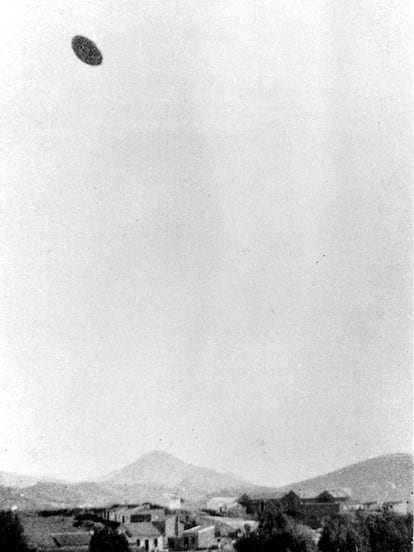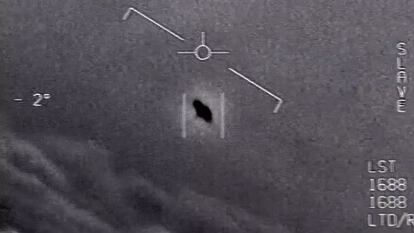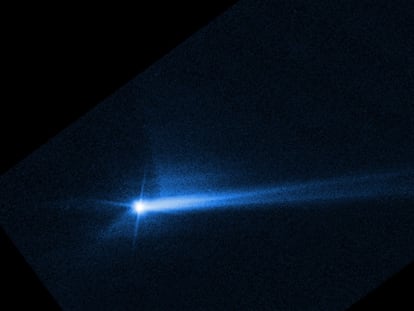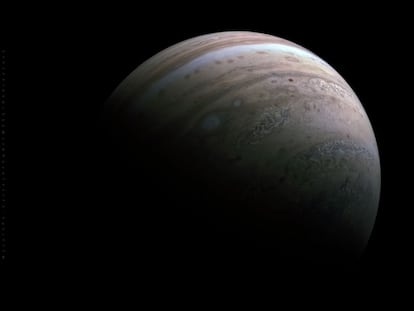NASA team initiates study to unravel the mysteries of unidentified aerial phenomena
The results of the US space agency’s investigation into UAP, which will focus solely on information that is not classified as secret or confidential, will be published in mid-2023

Officially, there are no UFOs (unidentified flying objects), but there are UAP (unidentified aerial phenomena), an updated and broader definition that will no doubt take some time to displace its predecessor, which has become indelibly burned into the collective imagination over several decades. Now, NASA has announced the creation of an independent study team to conduct an in-depth investigation into UAP.
NASA has selected 16 people to participate in the study, which comes with a catch that may disappoint conspiracy theorists: it will focus solely on information that is not classified as secret or confidential. The findings of the multidiscipline group, which began work on October 24, are expected to be made public in mid-2023.
“Unidentified aerial phenomena are of interest for both national security and air safety and the study aligns with one of NASA’s goals to ensure the safety of aircraft,” the US agency said in a statement on its website. “Without access to an extensive set of data, it is nearly impossible to verify or explain any observation, thus the focus of the study is to inform NASA what possible data could be collected in the future to scientifically discern the nature of UAP.”
The objective of the NASA team will be to examine how date collected by civilian government agencies, commercial data and data from other sources can potentially be analyzed to shed some light on these phenomena. A roadmap for potential data analysis by NASA will then be put forward.
“Exploring the unknown in space and the atmosphere is at the heart of who we are at NASA,” Thomas Zurbuchen, associate administrator of the Science Mission Directorate at NASA Headquarters in Washington, said. “Understanding the data we have surrounding unidentified aerial phenomena is critical to helping us draw scientific conclusions about what is happening in our skies. Data is the language of scientists and makes the unexplainable, explainable.”
Although not related to this new study, NASA has an active astrobiology program that focuses on the origins, evolution, and distribution of life beyond Earth. From studying water on Mars to probing promising “ocean worlds” like Titan and Europa, NASA science missions cooperate with the objective of finding signs of life in the wider universe.
The NASA team consists of nine men and seven women, comprising “some of the world’s leading scientists, data and artificial intelligence practitioners and aerospace safety experts,” said Daniel Evans, the assistant deputy associate administrator for research at NASA’s Science Mission Directorate. The team is led by David Spergel, president of the Simons Foundation and founding director of the institution’s Flatiron Institute for Computational Astrophysics.

Pentagon investigation
The Pentagon, the headquarters of the United States Department of Defense, also has its own parallel working groups, although these have a different focus to NASA. Last June, the Pentagon published a report on UAP, in which it that it could provide no answers to explain hundreds of sightings of unusual phenomena between November 2004 and March 2021. “Data is still being collected and analyzed,” concluded the document, which was compiled using information gathered by Washington’s top defense, intelligence and scientific agencies.
The US government has established five categories to classify recorded UAP events. The first includes weather balloons, birds and private recreational vehicles; the second covers atmospheric phenomena such as ice crystals, humidity or thermal fluctuations; the third is for objects developed by the US government and private arms manufacturers; the fourth covers the same material, but those developed by rival powers such as Russia and China, and the fifth takes into account almost everything that has no explanation included in the previous four: that is to say, those that remain a mystery, such as irregular flight patterns. The US military has established several multidiscipline teams of physicists, optical experts, meteorologists and metals experts to try and decipher these unexplained phenomena.
Last May, Pentagon officials unveiled their findings to the House Intelligence Committee and showed some examples of UAP sightings.
Tu suscripción se está usando en otro dispositivo
¿Quieres añadir otro usuario a tu suscripción?
Si continúas leyendo en este dispositivo, no se podrá leer en el otro.
FlechaTu suscripción se está usando en otro dispositivo y solo puedes acceder a EL PAÍS desde un dispositivo a la vez.
Si quieres compartir tu cuenta, cambia tu suscripción a la modalidad Premium, así podrás añadir otro usuario. Cada uno accederá con su propia cuenta de email, lo que os permitirá personalizar vuestra experiencia en EL PAÍS.
¿Tienes una suscripción de empresa? Accede aquí para contratar más cuentas.
En el caso de no saber quién está usando tu cuenta, te recomendamos cambiar tu contraseña aquí.
Si decides continuar compartiendo tu cuenta, este mensaje se mostrará en tu dispositivo y en el de la otra persona que está usando tu cuenta de forma indefinida, afectando a tu experiencia de lectura. Puedes consultar aquí los términos y condiciones de la suscripción digital.
More information
Archived In
Últimas noticias
Most viewed
- Sinaloa Cartel war is taking its toll on Los Chapitos
- Oona Chaplin: ‘I told James Cameron that I was living in a treehouse and starting a permaculture project with a friend’
- Reinhard Genzel, Nobel laureate in physics: ‘One-minute videos will never give you the truth’
- Why the price of coffee has skyrocketed: from Brazilian plantations to specialty coffee houses
- Silver prices are going crazy: This is what’s fueling the rally











































